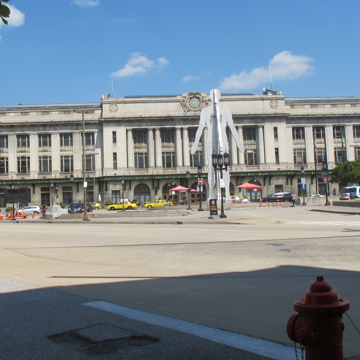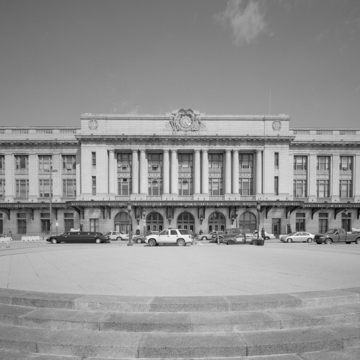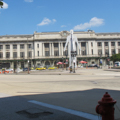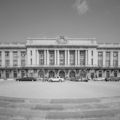The Pennsylvania Railroad replaced its 1886 Baltimore station with this impressive new Beaux-Arts classical structure designed by New York City architect Murchison. A cast-iron marquee on the first story runs the full width of the building. Centrally located north of downtown and surrounded by several residential neighborhoods and institutions of higher education such as the Maryland Institute College of Art, Penn Station’s design and siting reflected City Beautiful civic improvement ideals. A remarkably complete Rookwood Pottery ceramic tile installation is still extant on the interior, as are three stained glass domes. Although historically Penn Station never quite functioned as a true Union Station for Baltimore, in spite of early inclusion of Western Maryland Railway service, it is now the main hub for Amtrak service and various commuter rail lines.
You are here
PENNSYLVANIA STATION
If SAH Archipedia has been useful to you, please consider supporting it.
SAH Archipedia tells the story of the United States through its buildings, landscapes, and cities. This freely available resource empowers the public with authoritative knowledge that deepens their understanding and appreciation of the built environment. But the Society of Architectural Historians, which created SAH Archipedia with University of Virginia Press, needs your support to maintain the high-caliber research, writing, photography, cartography, editing, design, and programming that make SAH Archipedia a trusted online resource available to all who value the history of place, heritage tourism, and learning.





